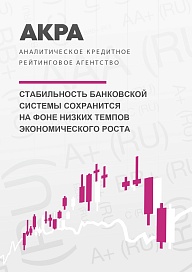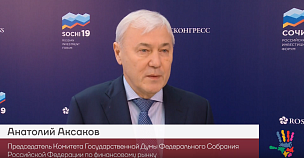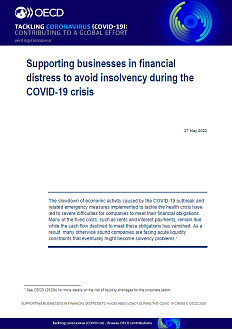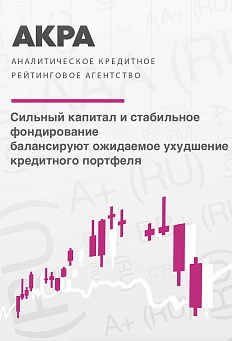Banking system to remain stable amid slow economic growth

A distinct feature of the fast growth in unsecured lending is the stable quality of the portfolio. However, regulatory changes in the consumer lending sector may result in deterioration of the retail loan portfolio. Moreover, ACRA believes that banks are on the verge of exhausting the potential to increase retail lending without eroding the quality of their portfolios. Recent years have seen rapid growth in unsecured lending and according to ACRA, this speaks to the growing social plight of the country’s population. To maintain spending levels, consumers have begun to reduce the share of their income directed towards savings and actively take out loans from banks and through microfinance institutions (MFIs). In this context, ACRA expects the total overdue debt to reach 5.9% in 2020.
High competition is an important factor pushing the profitability of banks lower. Meanwhile, the profitability of the entire industry continues to be highly dependent on the largest credit institution, Sberbank. Government-owned and quasi-public banks will remain the most active players in the financial services market. ACRA assumes that the profitability of interest transactions of banks will gradually decline. NIM should equal 4% in 2020 and continue drifting lower in subsequent years. At the same time, the Agency believes that a possible key rate cut will have a limited effect on NIM as credit institutions can timely reevaluate their funding costs.
The increasing importance of large banks and banks whose creditworthiness depends on the creditworthiness of their parent entities remains the overall trend in the sector. Small and medium-sized credit institutions are experiencing a deficit in quality borrowers and are facing tougher regulatory requirements. Changes in regulation also limit the development of small and medium-sized banks.
With the Bank of Russia changing its regulatory approach to unsecured lending, growth in the loan portfolio should slow down. ACRA expects the retail loan portfolio to grow 20.3% in 2019 and 17.7% in 2020. At the same time, this lending market segment continues to be the main driver of asset growth in the banking system. Mortgage loans should remain the fastest growing lending segment. In ACRA’s opinion, banking sector risks should remain moderate following regulatory changes in retail lending. MFIs may experience risk migration as well as the potential negative effects of an increased consumer debt load.
Anlytics on the topic



The Organisation for Economic Cooperation and Development has prepared analytical research on business support mechanisms to avoid insolvency during the COVID-19 crisis. The slowdown of economic activity caused by the COVID-19 outbreak and related emergency measures implemented to tackle the health crisis have led to severe difficulties for companies to meet their financial obligations. Many of the fixed costs, such as rents and interest payments, remain due while the cash flow destined to meet these obligations has vanished. As a result, many otherwise sound companies are facing acute liquidity constraints that eventually might become solvency problems.

In this work, the Analytical Credit Rating Agency (ACRA) examines the distinctive features of Sberbank which ensure its balanced and stable functioning in a worsening economic situation shaped by the coronavirus pandemic and the global oil crisis.

